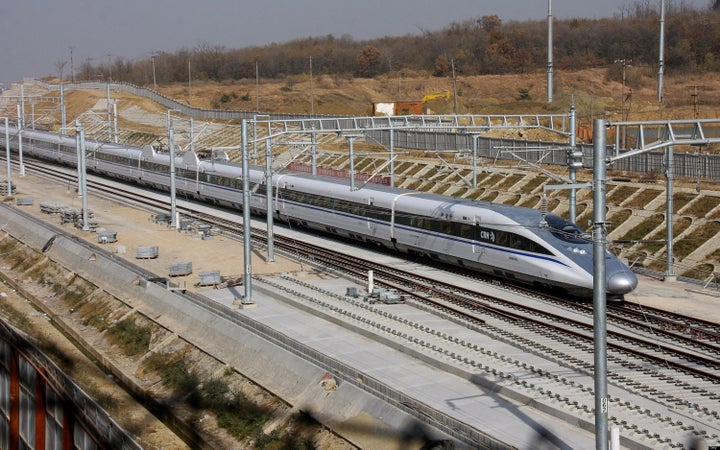
"We've lost it ... no doubt about it."
I was having dinner with an astronomer colleague who works at the Space Telescope Science Institute, and his downer of a message was in reference to a NASA telescope project that had hit a brick wall. Despite years of effort, it was unclear if the new instrument would ever be built. My friend thought that other nations were overtaking America's lead in space exploration.
His disheartening assessment struck a resonant chord: was this merely one more example of a far bigger problem -- the evaporation of America's "can do" attitude? Has "Yankee ingenuity" been supplanted by "Yankee ineffectiveness"?
More specifically, can we still build anything?
You have to wonder. Consider the well-worn examples. When was the last time you bought an American-made radio or television? If you're Gen X or younger, the answer is "never." Does the label on that shirt or skirt you're wearing say "Made in the USA"? If so, you probably got it at Goodwill, or maybe at a Smithsonian garage sale.
How about that car you're driving? I still remember my dismay in the summer of 2007 when -- for the first time in the history of planet Earth -- America's share of auto production dropped below 50 percent.
OK, those are merely trite testaments to the country's shift away from making its own consumer products. Everybody knows about it, and some people would argue it's a good thing that the steel mills are gone from Pittsburgh, and the factories in San Francisco have been turned into lofts for artists.
But the problem is more serious than the failure of American companies to fill the shelves at Walmart. We can't seem to get behind the big projects that define first-world status: namely, infrastructure and major research instruments.
Consider this: Do you think we could build something like the Panama Canal today? In 1904 Teddy Roosevelt took over the failed French canal effort, and a decade later, ships were gliding between the seas. Today, that wouldn't be time enough to get the paperwork signed. After the Civil War, seven years were spent spiking the transcontinental railroad in place, surely one of the most ambitious projects of the 19th century. Here in the Silicon Valley, it took longer than that to approve and construct a ten-mile, light-rail (read "trolley") line to San Jose.
America's premier high-energy physics machine -- Fermilab's tevatron -- will shut down this year, abandoning the search for the Higgs boson to the European Large Hadron Collider. (In 1993, Congress killed what could have been a worthy competitor to the LHC, the Superconducting Supercollider.) Our plans to go back to the moon are scaled back, while China's space ambitions are scaled up. And oh, by the way, China is putting in miles of high-speed rail every day. Here in California the citizenry is blocking progress on fast trains because we can't seem to build them at an affordable price, and the citizenry whines about having the darn things in their backyards. Ten years from now, when they're stymied at the airport, or bumper-to-bumper on the freeway, it's conceivable they'll wonder what went awry.
Some of this litany of non-accomplishment is rooted in politics. But I suspect there's another component: today's American kids don't seem to build stuff anymore. When I graduated high school, nearly a half-million people subscribed to Popular Electronics magazine. Soldering up some radio or hi-fi amplifier on the basement workbench was not just a personal passion -- a lot of young people were doing the same. The magazine expired in 1999 for lack of interest.
What about knocking together something mechanical? Well, hire yourself to a woodworking fair this weekend. You'll find it fertile ground for soliciting AARP memberships. Same thing at a radio amateur ham fest: too much of the hair is grey.
Judging by informal observation, most young Americans burn up their spare time buffing their emotional IQ and self-esteem with social media and non-stop texting. That's great for eye-thumb coordination, but what about the satisfaction of actually making something?
I don't think for a moment that today's populace is any less talented or creative than its predecessors. If nothing else, the inertia of DNA ensures that. But isn't it possible that a society in which young people only rarely construct things will become a society in which engineering is an impoverished enterprise? The concern is not so much that we don't put together the big stuff, but that we can't.
But maybe that's the problem: too many of them are.